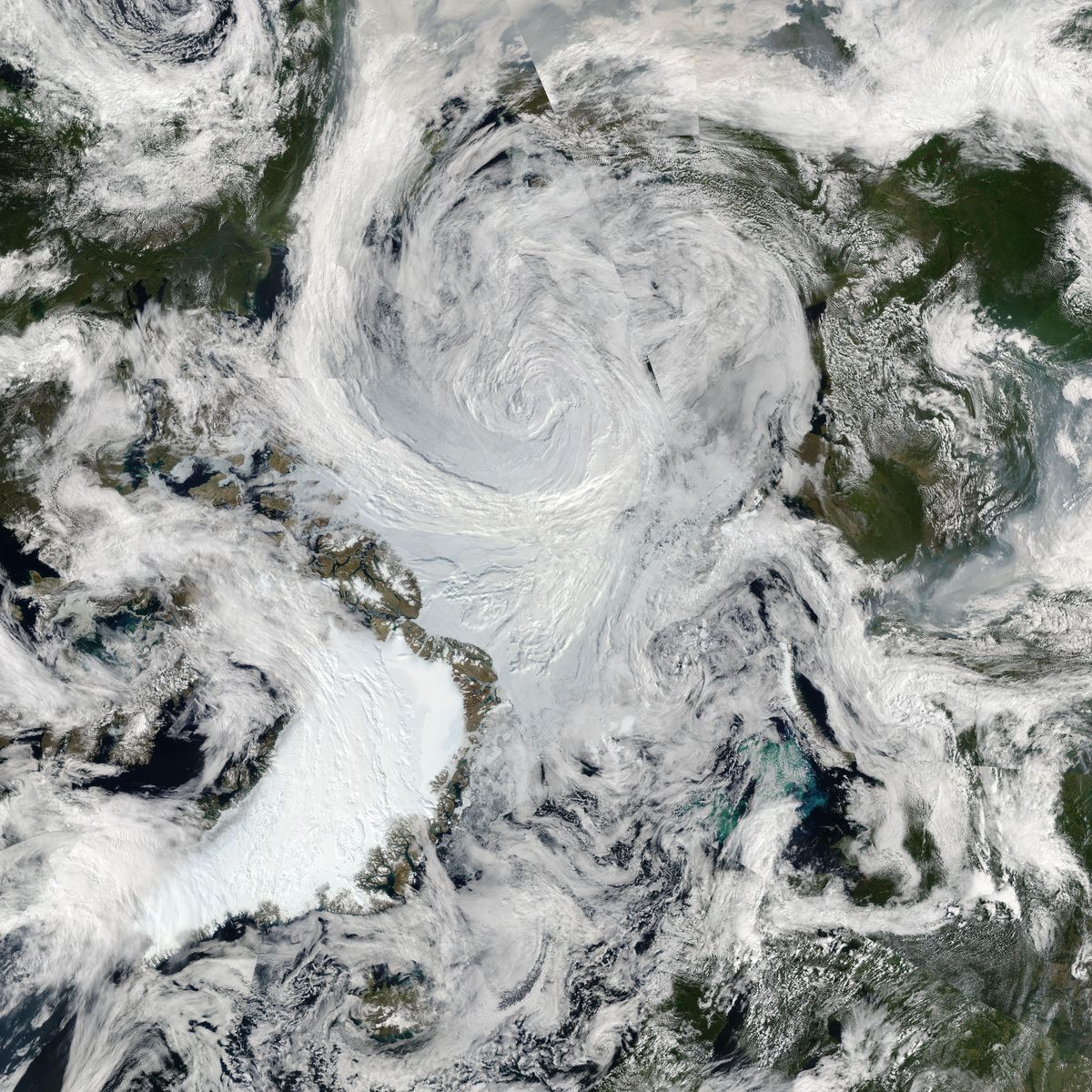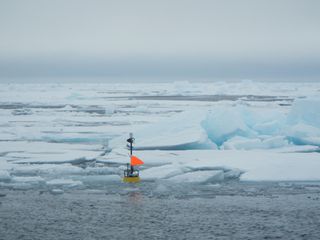Surf's Up in the Arctic: Record-High Waves Seen in 2012

Record-high waves hit Alaska's Beaufort Sea in September 2012, when Arctic sea ice shrank to an extreme summer low, a new study reports.
The study authors blame shrinking Arctic sea ice for the house-size swells, and predict that waves will grow larger as the Arctic ice pack melts further in future decades.
"We have long known that waves are the combined results of winds, time and distance," said lead study author Jim Thomson, an oceanographer with the University of Washington's Applied Physics Laboratory in Seattle. "In the Arctic Ocean, those distances are changing dramatically, and we are now observing the result," Thomson told Live Science in an email interview. [See Stunning Photos of Monster Waves]
Wave size rises with the amount of open water over which the wind blows, called fetch. On Sept. 18, 2012, high winds roared across more than 620 miles (1,000 kilometers) of ice-free ocean in the Arctic, kicking up huge swells. A sensor anchored offshore of northern Alaska that day measured waves more than 16 feet (5 meters) high, Thomson and co-author W. Erick Rogers, of the Naval Research Laboratory, reported June 2 in the journal Geophysical Research Letters.
The Arctic ice pack grows bigger in the winter and partially melts in the summer. By tracking the ice with satellites, scientists have discovered that the amount of ice that persists through the summer melt season is getting smaller and thinner each year. Arctic ice used to retreat about 100 miles (160 km) from Alaska's northern coast in the summer. Now, it is often more than 620 miles (1,000 km) from shore by September, when the ice pack reaches its minimum extent, Thomson said.

In 2012, the Arctic ice pack set a new record low for its summer melt season, shrinking to 1.32 million square miles (3.41 million square kilometers), according to the National Snow and Ice Data Center.
Two large storms as powerful as the tropical cyclones that menace the Atlantic Coast, stirred up the ice in late summer 2012 — one in August and one in September. Even though the August Arctic cyclone was intense, the September storm spawned bigger waves, because there was more fetch (open water distance), Thomson said.
Sign up for the Live Science daily newsletter now
Get the world’s most fascinating discoveries delivered straight to your inbox.
Huge waves were once rare in the Arctic Ocean, because swells couldn't build to fearsome size due to the extensive ice pack. Now, even though a house-size wave wouldn't make a Southwest Alaska fisherman bat an eye, researchers are concerned that the growing swells threaten the Arctic's expanding shipping trade. The powerful waves could also batter villages along the Arctic coastline that were once protected by ice lingering near-shore.
Researchers are also examining whether more open water might create a feedback loop, with waves breaking ice and speeding up summer melting. Thomson is part of a group who is deploying dozens of sensors offshore of Alaska this summer to study what happens when waves interact with ice.
"The waves are a potentially new process that can push and pull and crash to break up the ice," Thomson said. "There are several competing theories for what happens when the waves approach and get in to the ice."
Email Becky Oskin or follow her @beckyoskin. Follow us @livescience, Facebook & Google+. Original article on Live Science.












